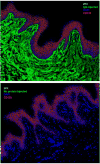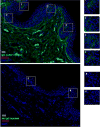Pathology-Based Research in Africa
- PMID: 29412886
- PMCID: PMC5894888
- DOI: 10.1016/j.cll.2017.10.006
Pathology-Based Research in Africa
Abstract
The process of conducting pathology research in Africa can be challenging. But the rewards in terms of knowledge gained, quality of collaborations, and impact on communities affected by infectious disease and cancer are great. This report reviews 3 different research efforts: fatal malaria in Malawi, mucosal immunity to HIV in South Africa, and cancer research in Uganda. What unifies them is the use of pathology-based approaches to answer vital questions, such as physiology, pathogenesis, predictors of clinical course, and diagnostic testing schemes.
Keywords: Burkitt lymphoma; Cancer; HIV/AIDS; Histopathology; Infectious disease; Malaria; Pathology.
Copyright © 2017 Elsevier Inc. All rights reserved.
Figures









References
-
- UNAIDS. The Gap Report. UNAIDS; Geneva: 2014.
-
- UNAIDS. Global AIDS update 2016. UNAIDS; Geneva: 2016.
-
- World Malaria report 2015. World Health Organization; 2015.
-
- Ferlay J, Shin HR, Bray F, Forman D, Mathers C, Parkin DM. Estimates of worldwide burden of cancer in 2008: GLOBOCAN 2008. Int J Cancer. 2010;127(12):2893–2917. - PubMed
Publication types
MeSH terms
Grants and funding
LinkOut - more resources
Full Text Sources
Other Literature Sources

